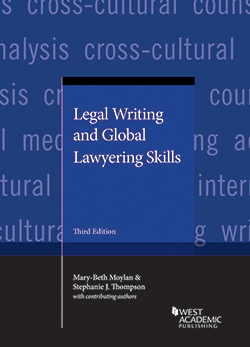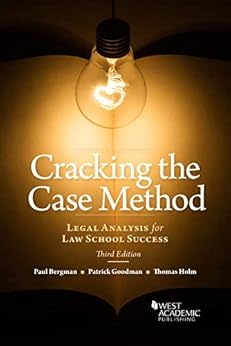
There are two main types of legal writing:
New Edition of Textbook Co-authored by BLS Faculty:
 Writing and Analysis in the Law by
Writing and Analysis in the Law by Additional Textbooks:
 Legal Writing by
Legal Writing by  Legal Writing and Global Lawyering Skills by
Legal Writing and Global Lawyering Skills by  Legal Writing in Plain English: A Text with Exercises by
Legal Writing in Plain English: A Text with Exercises by  Legal Writing: Process, Analysis, and Organization by
Legal Writing: Process, Analysis, and Organization by  Writing and Analysis in the Law by
Writing and Analysis in the Law by Guides, Handbooks & Manuals:
 The (Not Too Serious) Grammar, Punctuation, and Style Guide to Legal Writing by
The (Not Too Serious) Grammar, Punctuation, and Style Guide to Legal Writing by  The Redbook: A Manual on Legal Style by
The Redbook: A Manual on Legal Style by  The Complete Legal Writer by
The Complete Legal Writer by Study Aids:
 Legal Writing (Examples & Explanations series) by
Legal Writing (Examples & Explanations series) by  Legal Writing and Analysis in a Nutshell by
Legal Writing and Analysis in a Nutshell by Selected Essays & Speeches:
"plagiarism (pla´ j • riz´ • m) n. Taking the literary property of another, passing it off as one’s own without appropriate attribution, and reaping from its use any benefit from an academic institution."
"Avoiding allegations of plagiarism requires knowing when to cite. Here are important rules and suggestions to follow when working with authority:
1. Acknowledge direct use of someone else’s words.
2. Acknowledge any paraphrase of someone else’s words.
3. Acknowledge direct use of someone else’s idea.
Careful scholarship, which is especially important in an academic setting, requires adhering to two additional rules:
4. Acknowledge a source when your own analysis or conclusion builds on that source.
5. Acknowledge a source when your idea about a legal opinion came from a source other than the opinion itself."
- Excerpts above reproduced from pp. 2 & 4 of Law School Plagiarism v. Proper Attribution, a publication of the Legal Writing Institute.
In the BLS Code of Academic Responsibility, please consult Section B. PLAGIARISM, UNAUTHORIZED COLLABORATION OR USE OF MATERIALS, and UNAUTHORIZED RECORDINGS.
Plagiarism in an Online World - Staying Out of Trouble
Minneapolis, MN : Center for Computer-Assisted Legal Instruction
Approximate completion time: 45 minutes
Textbooks:
Critical Reading Guides:
 Critical Reading for Success in Law School and Beyond by
Critical Reading for Success in Law School and Beyond by Other Study Aids:
 Cracking the Case Method: Legal Analysis for Law School Success by
Cracking the Case Method: Legal Analysis for Law School Success by  Legal Analysis: 100 Exercises for Mastery by
Legal Analysis: 100 Exercises for Mastery by